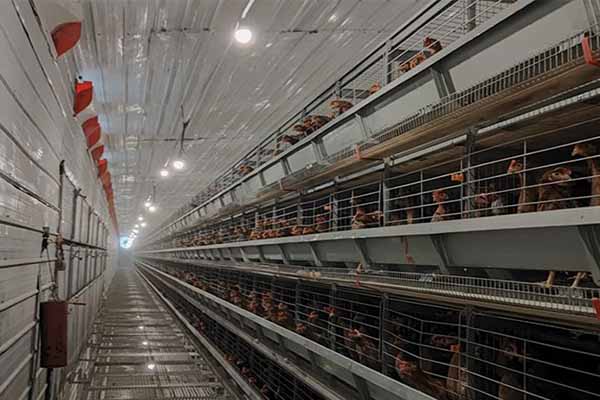Chicken Farm Design and Construction Tips: A Comprehensive Guide
Time : 2025-07-02
Designing and constructing a chicken farm is a complex task that requires careful planning and a deep understanding of poultry farming. This article provides you with valuable tips to ensure that your chicken farm is efficient, cost-effective, and sustainable. By following these guidelines, you can create a farm that not only meets the needs of your chickens but also maximizes your profits.
Site Selection
The first step in designing a chicken farm is to select the right location. Consider the following factors:
– Climate: Choose a site that is suitable for the climate you live in. For example, in hot climates, it’s important to have good ventilation and shade for the chickens.
– Accessibility: Ensure that the site is easily accessible for suppliers, farmers, and visitors.
– Water Source: A reliable water source is essential for both the chickens and the farm’s operations.
– Zoning Regulations: Check local zoning laws to ensure that your farm is allowed in the area.
Layout and Design
Once you’ve selected the site, it’s time to design the layout of your chicken farm. Here are some key aspects to consider:
– Brooder House: This is where chicks are kept for the first few weeks of their lives. It should be well-insulated and have controlled temperature and humidity levels.
– Grow-out Houses: These houses are for chickens that are a few weeks old. They should be designed to provide adequate space for the chickens to move around and grow.
– Laying Houses: These houses are for adult hens that are laying eggs. They should be designed to ensure easy access to nesting boxes and feed and water sources.
– Manure Management: A proper manure management system is crucial for maintaining hygiene and preventing disease. Consider using a composting system or a solid manure removal system.
– Ventilation: Good ventilation is essential for the health and well-being of your chickens. Ensure that your farm has a balanced ventilation system that provides fresh air while keeping the chickens cool.
Building Materials
The choice of building materials is important for both the structural integrity and the energy efficiency of your chicken farm. Here are some options to consider:
– Metal Roofing: Metal roofs are durable, fire-resistant, and provide good insulation.
– Insulated Panels: Insulated panels can help maintain a stable temperature inside the houses and reduce energy costs.
– Concrete Floors: Concrete floors are easy to clean and sanitize, which is important for preventing disease.
– Windows and Doors: Use windows and doors that are well-sealed to prevent drafts and keep the chickens comfortable.
Equipment
Choosing the right equipment is crucial for the success of your chicken farm. Here are some key pieces of equipment to consider:
– Feeding Systems: Automated feeding systems can help reduce labor costs and ensure that the chickens receive the right amount of feed.
– Watering Systems: Automatic watering systems provide fresh, clean water to the chickens at all times.
– Climate Control Systems: Climate control systems help maintain the optimal temperature and humidity levels in the houses.
– Cleaning Equipment: Cleaning equipment, such as pressure washers and brooms, is essential for maintaining hygiene on the farm.
Biosecurity
Biosecurity is vital for preventing disease in your chicken flock. Here are some biosecurity measures to consider:
– Sanitation: Regularly clean and sanitize the houses, equipment, and any other areas where the chickens come into contact with.
– Isolation: Keep new chickens in an isolated area for a few weeks to prevent the spread of disease.
– Employee Training: Train your employees on biosecurity practices to ensure that they follow proper procedures.
Sustainability
A sustainable chicken farm can help reduce its environmental impact and save on costs. Consider the following sustainability practices:
– Energy Efficiency: Use energy-efficient lighting and heating systems to reduce your farm’s energy consumption.
– Water Conservation: Implement water-saving practices, such as rainwater harvesting and low-flow faucets.
– Composting: Compost manure and bedding to reduce waste and create a natural fertilizer for your crops.
Conclusion
Designing and constructing a chicken farm is a complex task that requires careful planning and attention to detail. By following these tips, you can create a farm that is efficient, cost-effective, and sustainable. Remember to prioritize the health and well-being of your chickens, and to implement proper biosecurity and sustainability practices.












